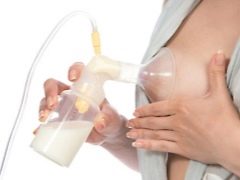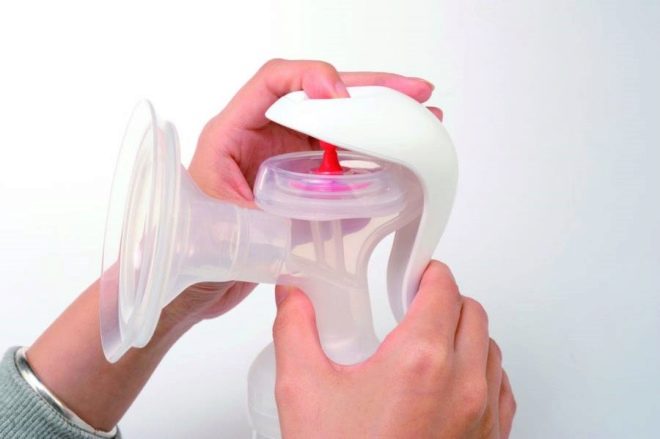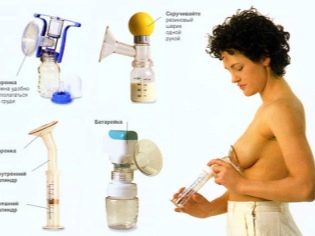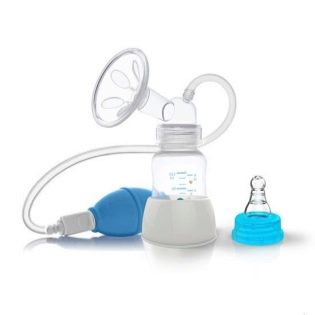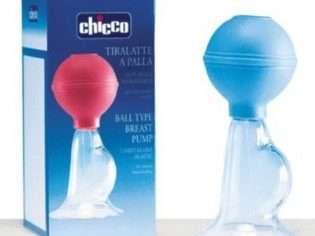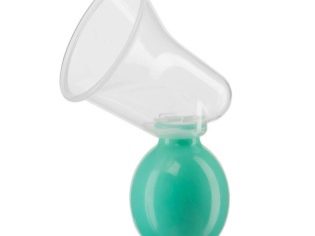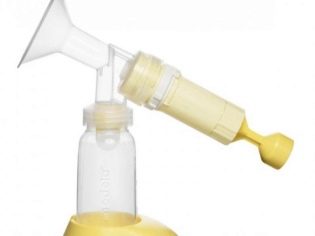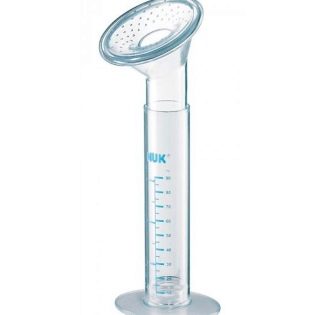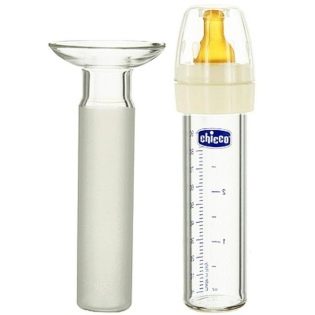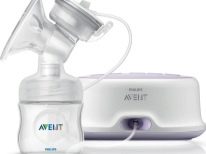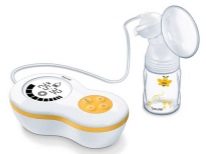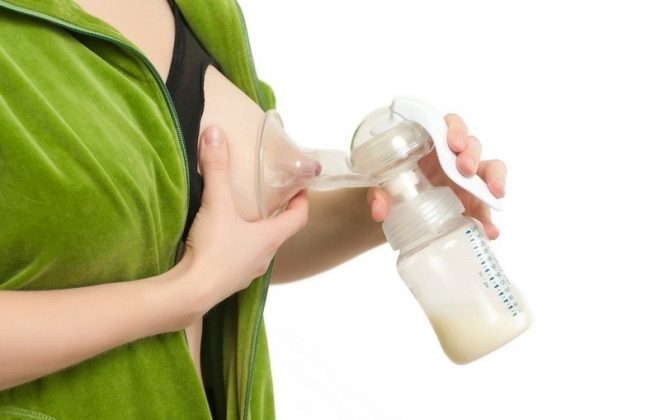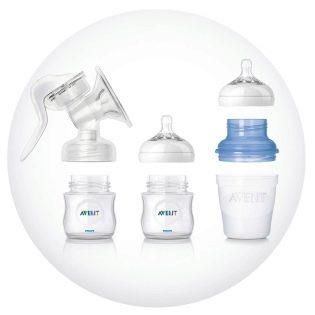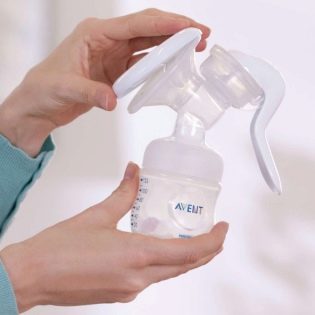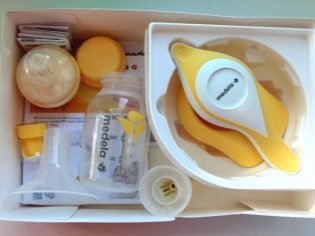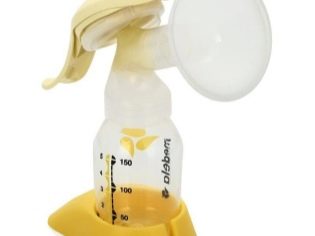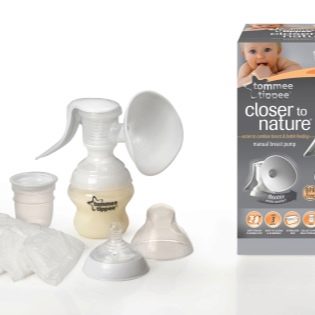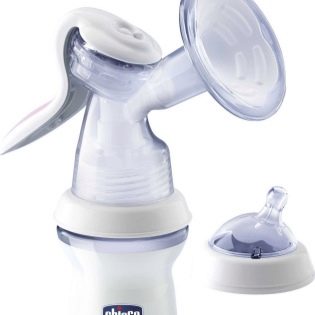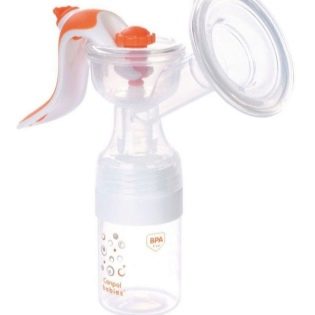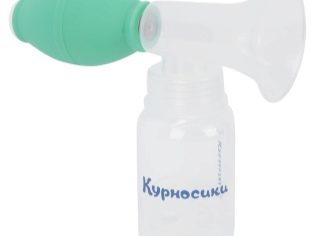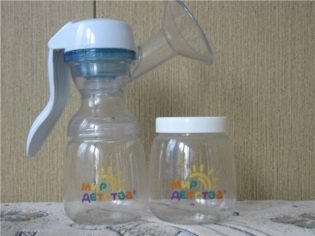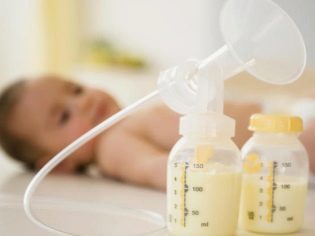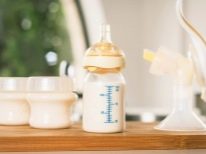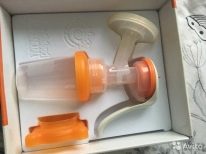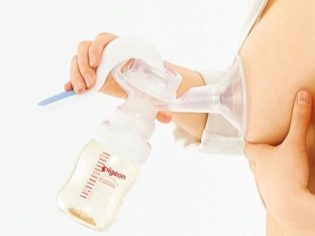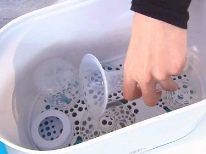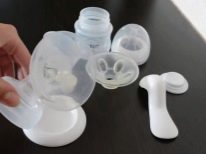Manual breast pumps: tips on choosing and operating
The birth of a child is one of the most important moments in a woman’s life. Many young mothers still in the first months of pregnancy or even at the planning stage think about buying all the necessary things. One of these purchases, facilitating the life of a young mommy, is a breast pump. This is a device with the help of which you can quickly and conveniently express breast milk, which you will need to feed your baby.
Kinds
Even breastfeeding supporters say usability of this device.
- First, you can combine breastfeeding and a bottle in cases where the baby sucks the breast badly. In addition, according to the recognition of many women, breastfeeding can be very painful, and when using such a device feeding occurs through the nipples.
- Secondly, a woman can be absent and leave the child to another parent or assistant who feeds the baby with milk in time.
Before the appearance of breastpumps, breast milk was decanted using manual manipulations, which also caused pain and discomfort. Unlike painful manual decanting, the breast pump not only reduces the discomfort, but also helps to get rid of the stagnation of milk and stimulates its increased production.
The principle of operation of all breastpumps is the same - it is the drawing out of milk from the breast with the help of a vacuum, which is created by a nozzle and a special pump. Depending on how the work of this pump is built, the devices are divided into mechanical (manual) and electrical.
Handheld devices are the cheapest and easiest version of breast pumps, from which it is best to begin to get acquainted with such a product. They are always produced only for individual pumping, so they are not used in maternity homes. Mechanical devices, in turn, are divided into several types.
- Pump action Such a breast pump consists of two parts, one of which is a nozzle made of silicone or plastic, which is put on the chest. And the second element is a pump with a round pump. When you press on the pump in the nozzle creates a vacuum that pulls the milk. Manufacturers do not always include a bottle in the kit, so they will have to be purchased separately. This is the simplest design of the breast pump, which appeared a long time ago, but remains popular today.
- Pear. The design is a plastic nozzle, which is placed on the nipple, and a rubber bulb. Such a breast pump is very similar to a conventional pump pump, just the pump is located right behind the nozzle, and not at a distance from it. In order to go milk, you need to squeeze the pear with your hand, creating a vacuum. These kits usually include a bottle for collecting milk. Both pump and pear breast pumps are considered not very effective, but the cheapest devices.
- Piston. Such a breast pump is already more efficient, but it is also easily disassembled and assembled. Silicone nozzle, milk bottle, as well as a small piston mechanism - that's all his device. When you press the handle, the nozzle sucks in the milk and sends it into a bottle. The device is almost silent, which will allow to use it with a sleeping baby. There are models with a weak spring, which are easily pressed, and with a very tight. When using the second models, the hand gets stronger, but their suction strength is higher.
- Syringe Syringe pump consists of two long cylinders. One of them is placed inside the other and walks smoothly in it.The inner cylinder is applied to the nipple, and the movement of the outer cylinder away from the breast creates a vacuum that allows milk to flow out of the breast. All this construction is similar to a large syringe without a needle, for which it received its name.
A baby feeding bottle is not included, but for this you can use the cylinder itself. Unfortunately, syringe pumps are very different from each other, and it’s just impossible to replace a broken part from one model with a part from another.
An electric breast pump is most often similar to a conventional pump pump; however, it is connected to the power supply network or a battery, rather than manual work. The vacuum is pumped harder for those models that plug into the outlet, but they are much more noisy. Unlike manual models, electric models have a intensity regulator and a control unit, on the display of which all necessary information is displayed.
One of the novelties among the electric devices is the electronic breast pump. It will allow not only to select the desired rhythm and force of decanting, but also to memorize the necessary data, so that at the next use you do not set the necessary marks again. Such models imitate the movements of the child during absorption, which makes the process of squeezing more familiar to those moms who are used to breastfeeding.
Advantages and disadvantages
Every mother wants to give her baby the best, including a large amount of healthy breast milk. Therefore, the correct choice of the breast pump is one of the most important steps towards this goal. The hand-held apparatus is significantly different from the electronic one, and the pumping apparatus from the syringe one. Someone is only important price, and someone will choose the most silent model. In order to take into account all the advantages and disadvantages of breast pumps, it is necessary to compare their characteristics.
Type of device | Benefits | disadvantages |
pump action | low price ease of use silent operation easy to clean and sterilize ability to control the intensity of pressure on the pump | some do not have milk bottles poor absorption can injure the nipple tired physical work it is impossible to sterilize the entire apparatus completely |
pear | low price ease of use silent operation easy to clean and sterilize bottle included possibility of controlling the intensity of the compression of the pear | very weak vacuum manual work, because of which a woman gets tired quickly |
piston | ease of use silent operation bottle included easy to clean and sterilize sufficient suction power ability to control the intensity of pressing the handle | price higher than pump or pear pump the piston stroke is very tight, the hand quickly gets tired due to constant friction parts wear out quickly and fail |
syringe | silent operation bottle included easy to clean and sterilize sufficient suction power ability to control work | the price is higher than the cost of all other handheld devices the device is more difficult to use, it needs to adapt the longest pumping compared to other models |
In general, manual models are more suitable for rare, one-time use. Regular pumping with manual models is not recommended because the devices can damage the nipples, especially when using a pump pump. In addition, frequent use quickly wears the details of hand-held devices, after which they fail.
For those who express breast milk 1 time per day and more often, an electric device that performs the procedure in a more benign mode is perfect.
Top models
On the Internet there are various ratings of breast pumps, showing the most successful models, according to reviews of young mothers. Most often in them it is possible to meet the following producers.
- Phillips avent - It is the most popular manufacturer that produces four types of breast pumps.The best model is considered piston Avent Philips 330/20, which costs about 3000 rubles. The kit itself includes a breast pump, a 125 ml milk bottle with two lids and a few spare parts for replacement. It works completely silently, it is easy and comfortable to use. The device has a special replaceable nozzle, which does not siphon out the milk, but massages the breast, preparing it for decanting. Model Avent is convenient to take with you on a trip or for a walk, as it is very compact and fits into almost any handbag.
- Swiss company Medela also one of the market leaders. The best model, according to customers, is the Medela Harmony breast pump with a piston mechanism. The cost of the device in the domestic market is about 2200-2500 rubles. Two-phase pumping will allow you to gently prepare the breast for the first rush of milk by light massage. The stroke of the handle is so quiet that you can express the milk next to the sleeping baby. Adjusting the speed of work will allow you to control the duration and intensity of suction, and the simplicity of the design will not cause problems with the assembly and disassembly of the device.
- Chicco, Canpol Babies, Nuk, Tommee Tippee. All of these firms are less popular in the first two, but they also often fall in the tops of the best manufacturers. Good quality at a reasonable price provides them with a stable market demand. The best models are the piston Tommee Tippee Closerto Nature, comparable in price to the Avent Philips 330/20 model, and the Chicco pump. The first is good with a large selection of silicone nozzles, each woman will be able to choose a form that suits her. It has a special container for sterilization and storage, as well as a separate compact container for transferring the device.
The Chicco Breast Pump is more economical in price (about 1,000 rubles), but is only suitable for those women who have no problem with the amount of breast milk.
- "The World of Childhood", "Kurnosiki" and other Russian brands rarely get to the top of the ratings, although they have fairly good reviews due to the low price with high reliability. The average price of such breast pumps varies from 1,000 to 2,000 rubles. Domestic breastpumps are convenient for its standard: a pen and a bottle from one device are perfect for another. Unfortunately, such inexpensive devices quickly fail and are not suitable for regular use.
Based on the rating of the most popular models, a definite conclusion can be made: women prefer reciprocating breast pumps from foreign manufacturers. The piston mechanism is leading due to high reliability and speed of work, as well as ease of use, unlike the syringe pump.
How to choose?
It is not enough - just to decide on the type of a suitable breast pump, you need to choose the right one from all the models offered in the store or on the website. It is not necessary to purchase a new product, you can buy a high-quality device from your hands, or you can even rent it. However, in any case, it is necessary to thoroughly wash and sterilize all possible details of the breast pump before use.
Before buying a manual breast pump, you should pay attention to the following nuances.
- When choosing between pump and piston unit, the latter should be preferred. Pumping devices often cause milk stagnation in the breast. Because of such stagnation, the chest hardens and hurts, and its development is a rather painful and complicated procedure.
- The best models have two pumping phases. In the first phase, the breast is prepared for decanting with the help of massage, and in the second phase, the machine already draws milk from it. Massage will not only relax the breasts and reduce discomfort, but also stimulate the mammary glands to further increase the amount of milk.
- The presence of complete bottles and teats will greatly simplify the process of pumping and feeding. No need to sterilize additional packaging and pour the finished milk.You can immediately put on a comfortable nipple on the bottle and store it in finished form.
- The nozzle on the chest can be plastic or silicone. The latter is more elastic and can take an anatomical shape, which facilitates the process of obtaining a nutrient fluid. In addition, there are nozzles with petal bulges that mimic the baby's sucking movements and facilitate the process of pumping.
How to use?
The basic rules for using a manual breast pump are quite simple.
- The most important thing is the purity of both the apparatus itself and the woman’s body. Before starting the procedure, all parts of the device that will be in contact with the body and milk must be carefully sterilized or rinsed. Chest should be washed with warm water without soap to remove sweat and dirt. Wash hands thoroughly with soap.
- In order to begin the process of decanting manually, you need to attach the funnel of the breast pump to the breast. The nipple should be exactly in the center of the nozzle, otherwise the risk of cracks and scuffs is high. The nipple should not be squeezed or pinched by the nozzle.
At occurrence of sharp painful sensations it is necessary to immediately remove the attachment and install it correctly.
- First, you need to do a few rhythmic clicks on the pear / pump / handle half-power: this is done so that the milk rushes to the nipple. After the first droplets of milk have appeared, you can proceed to monotonous pressing the handle at a pace in which the woman will be most comfortable.
- One hand can support the breast, but in no case do not need to put pressure on it, "expelling" the milk. Gradually rare drops should turn into small trickles. The pace is maintained until the milk stops dripping, after which you can either change the breast or try to trigger a second milk flow, repeating the whole procedure from the beginning.
- After proper breast pumping, relief should be felt, the pulling sensation should go away. Upon completion of the work with the apparatus, it must be disassembled, thoroughly rinsed all parts and dried them. Keep the device better assembled. Strained milk can be given immediately to the baby or stored for storage in a refrigerator or freezer.
Care Tips
Before using the breast pump for the first time, it must be sterilized. The device is disassembled into its component parts and those that are in direct contact with breast skin and milk are placed in boiling water for at least 5 minutes. This should be done after each procedure, preferably immediately after use, it will always allow you to have the device ready at hand. If the procedure is postponed to the last moment each time, then the risk is great to just forget to sterilize the device.
Not every breast pump can be boiled, usually the most costly models, which are made of low-quality plastic, have such a ban. Such devices should be thoroughly rinsed with hot water without the use of detergents.
Special attention should be paid to universal breast pumps. It is strictly forbidden to wash some of their parts, since contact with water can damage them.
Before you immerse the parts under water, you must carefully study the manufacturer's instructions attached to the product. It is better to store the breast pump in a closed box so that dust and debris do not fall on its surface.
All women are different and if one of them liked a certain model of the breast pump, this does not mean that she will like the rest. Until a nursing mother tries a particular model on herself, she cannot guarantee that it will suit her. In order not to buy all the models, you should focus on how often the device will be used.
For regular pumping more expensive foreign models with wide functionality are suitable. For one-time use, you can limit the purchase of a more budget domestic option. A quality product can be found among both expensive and cheap goods.
Doctor Komarovsky will tell you how to choose a breast pump in the next video.
